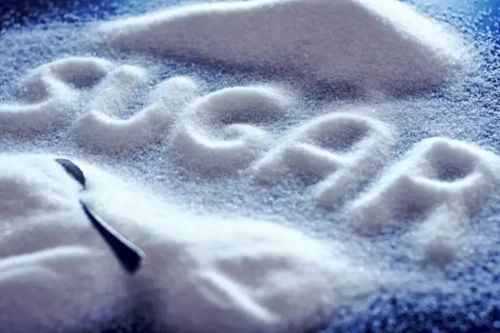
It has been around for thousands of years and has been known for its many stimulating and mind altering effects. It is a drug which is so commonly available in so many different forms and guises that it is often hard to even look at it in that way. You’ll meet millions of fellow Reframers from around the globe in our 24/7 forum chat and daily Zoom check-in meetings. You’ll also have the opportunity to connect with our licensed Reframe coaches for more personalized guidance. We’ve all been to lively social events with music, laughter, and chatter all around.
Alcohol’s Actions as a Reinforcer: Dopamine’s Role

(For more information on endogenous opioid peptides, see the article by Froehlich, pp. 132–136.) This hypothesis is supported by observations that chemicals that inhibit the actions of endogenous opioid peptides (i.e., opioid peptide antagonists) prevent alcohol’s effects on dopamine release. Opioid peptide antagonists act primarily on a brain area where dopaminergic neurons that extend to the NAc originate. These observations indicate that alcohol stimulates the activity of endogenous opioid peptides, leading indirectly to the activation of dopaminergic neurons. Opioid peptide antagonists would interfere with this process, thereby reducing dopamine release. Dopaminergic neurons that relay information to the NAc shell are extremely sensitive to alcohol.

GLP-1s seem to help some people with food addiction
- Some doctors are prescribing these drugs off-label for a variety of addictive disorders.
- The positive reinforcing action of alcohol comes from the activation of the dopaminergic reward pathway in the limbic system.
- Dopamine levels fall, and the euphoric buzz goes with it, but your brain is looking to regain the feeling caused by the increased level of dopamine.
- The review paper will give an overview of the neurobiology of alcohol addiction, followed by detailed reviews of some of the recent papers published in the context of the genetics of alcohol addiction.
- N-methyl-d-aspartate, or NMDA, is a chemical that specifically activates this glutamate-receptor subtype.
- The development of positron imaging technique (PET) and the radiotracer 11C‐raclopride in the 1990s made it possible to study in vivo dopamine function in humans.
- The study concludes by stating that their data does not support a role of serotonergic polymorphisms in AD.
Glutamate systems have been known for a long time to be involved in the acute reinforcing actions of alcohol and the effect of alcohol on an organism can be mimicked with the help of NMDA receptor antagonists.3 Unlike the case with GABA, alcohol inhibits glutamate activity in the brain. As an example, the agent acamprosate modulates glutamate transmission by acting on NMDA and/or metabotropic glutamate receptors.30 Therefore, by reducing excessive glutamate activity, acamprosate blocks excessive alcohol consumption. With regards to the VTA, both in vitro and in vivo studies show that alcohol increases the firing of dopamine neurons in the VTA projecting to NAc 75–79, 40. Similarly, in a situation of synaptic transmission blockade, alcohol has been found to increase the firing of dissociated VTA dopamine neurons 76, 77 implying that alcohol activates ventral tegmental dopamine neurons independent of afferent signalling. Furthermore, studies with intra‐VTA alcohol infusions highlight that different subregions within the heterogeneous VTA might have different ability to modulate the alcohol‐induced dopamine response. Specifically, rats voluntarily self‐administer alcohol, as well as acetaldehyde (an alcohol metabolite) into the posterior, but not anterior, part of the VTA 80–85, indicating that alcohol is reinforcing only within the posterior VTA.

2.5. Human genetic evidence: alcohol dependence and dopamine

Although there exists promising preclinical results, the majority of placebo‐controlled randomized clinical trials with traditional dopamine antagonists and agonists have so far have been discouraging. Furthermore, the severe side-effect profiles of many of these compounds may limit their clinical use. Newer dopamine agents, such as partial agonists and dopamine stabilizers, attenuate alcohol‐mediated behaviours in rodents as well as humans. Preclinical as well as clinical studies have shown that substances indirectly targeting the mesolimbic dopamine system may be potential targets for attenuation of alcohol reward. Alcohol dependence is a chronic relapsing psychiatric disorder significantly contributing to the global burden of disease 1 and affects about four percent of the world’s population over the age Halfway house of 15 (WHO). In the fifth edition of the diagnostic and statistical manual of mental disorders (DSM), the term alcohol use disorder was introduced and grossly defined as problem drinking that has become severe.
- Glutamate is the major excitatory neurotransmitter in the brain and it exerts its effects through several receptor subtypes, including one called the N-methyl-D-aspartate (NMDA) receptor.
- Overall, the results from studies evaluating olanzapine as a potential medication for alcohol dependence have provided evidence of a marginal effect restricted to a sub population of patients (with the longer dopamine D4 receptor allele).
- Similarly, another study conducted by66 found no association between the genes encoding GABRA1 and GABRA6 with alcoholism.
- It should be noted that some studies have shown contradicting effects 137–139, indicating that the role of dopamine in alcohol‐mediated behaviours in complex.
- Alcohol-induced augmentation of dopamine re-uptake and kappa opioid receptor sensitivity, both negative regulators of dopaminergic activity, persisted for at least 30 days into abstinence.
- The sharp rise and fall in dopamine levels might make recovering from drinking extremely difficult and reinforce a cycle of drinking in pursuit of that elusive dopamine high.
In contrast to other stimuli, alcohol-related stimuli maintain their motivational significance even after repeated alcohol administration, which may contribute to the craving for alcohol observed in alcoholics. Albeit the preclinical data look promising regarding the glycine transporter‐1 inhibitor Org25935, the multicenter randomized clinical trial produced a negative outcome on alcohol intake, but did not discard the potential importance of the mechanism 207. More promising clinical studies with varenicline show that this agent decreased alcohol consumption and craving in an experimental setting in heavy‐drinking smokers 208–210. Moreover, data from a randomized clinical trial in alcohol‐dependent individuals show that the smoking cessation agent reduced the weekly percent heavy drinking days drinks, decreased the drinks per drinking day as well as prevented alcohol craving 211. It should, however, be noted that recent clinical trials in alcohol‐dependent individuals were unable to find a beneficial effect of varenicline based on self‐reported alcohol consumption 212, 213.
- WKS is a brain disorder caused by a thiamine deficiency or lack of vitamin B-1.
- Our brains don’t do well at multitasking, that’s why choosing one very tiny goal at a time offers you the best chance of success.
- The etiology and pathology of alcohol dependence is the outcome of a complex interplay of biological, psychological and socio-environmental factors.
- Basically, dopamine is what teaches your brain that alcohol equals reward, making you naturally want more alcohol.
- Besides glycine receptors and nAChR, there are various signalling systems indirectly targeting the mesolimbic dopamine system with promising preclinical findings on alcohol‐mediated behaviours.
- This section collects any data citations, data availability statements, or supplementary materials included in this article.
- In conclusion, while that cocktail might indeed provide a temporary dopamine boost, understanding its broader impacts on brain chemistry can help us approach alcohol consumption with greater awareness and responsibility.
In this review, we will therefore focus on studies with clear face validity to the human condition, that is those using voluntary self‐administration. There are also notable differences in dopamine response between casual drinkers and heavy drinkers. In casual or light drinkers, alcohol consumption typically results in a predictable increase in dopamine release, contributing to the pleasurable effects of drinking. However, in heavy drinkers or alcohol and dopamine individuals with alcohol use disorders, the dopamine system can become dysregulated. Adhering to the ketogenic diet can reduce or stop seizures, even when other treatments fail, via mechanism(s) distinct from other available therapies. These results have led to interest in the diet for treating conditions such as Alzheimer’s disease, depression and schizophrenia.
